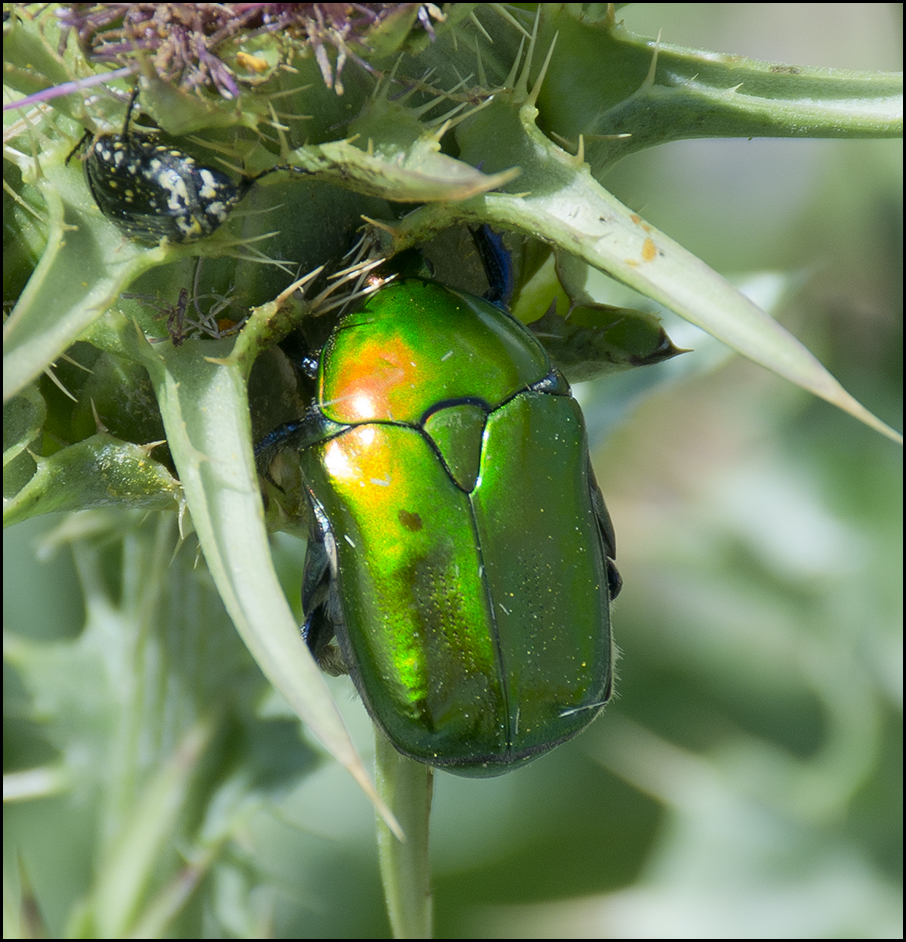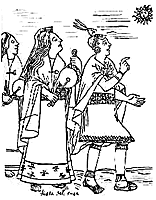|
Inca Clathratus
''Inca clathratus'' is a species of flower chafer in the family Scarabaeidae, indigenous to Central and South America. These beetles can be seen surrounding the sap flows from injured or diseased trees anytime in the day and sometimes at night. They mostly feed at the sap flows of the trees, including avocado and mango A mango is an edible stone fruit produced by the tropical tree ''Mangifera indica''. It is believed to have originated in the region between northwestern Myanmar, Bangladesh, and northeastern India. ''M. indica'' has been cultivated in South a ... trees. Like other beetles they also feed off of rotting fruit. There are a few different subspecies of ''Inca clathratus'' including: ''Inca clathratus sommeri'', ''Inca clathratus clathratus'', and ''Inca clathratus quesneli''. The species name has been frequently misspelled as "''clathrata''" but the genus name '' Inca'' is masculine. Traits of ''Inca clathratus quesneli'' Male : Length is 37.5 mm for the t ... [...More Info...] [...Related Items...] OR: [Wikipedia] [Google] [Baidu] |
Guillaume-Antoine Olivier
Guillaume-Antoine Olivier (; 19 January 1756, Les Arcs, Var, Les Arcs near Toulon – 1 October 1814, Lyon) was a French entomologist and naturalist. Life Olivier studied medicine in Montpellier, where he became good friends with Pierre Marie Auguste Broussonet. With Jean Guillaume Bruguière and Jean-Baptiste Lamarck, he collaborated in the creation of ''Journal d'Histoire Naturelle'' (1792). Afterwards, he served as a naturalist on a 6-year scientific journey that took him to Asia Minor, Persia, Egypt, Cyprus and Corfu. He returned to France in 1798 with a large collection of natural history specimens from his travels. Later, he was associated with the ''École nationale vétérinaire d'Alfort'', where in 1811, he was appointed professor of zoology. Olivier was a close friend of Johan Christian Fabricius and a patron of Pierre André Latreille. Although primarily an entomologist, Olivier also worked in the scientific field of herpetology, describing several new species of A ... [...More Info...] [...Related Items...] OR: [Wikipedia] [Google] [Baidu] |
Flower Chafer
Flower chafers are a group of scarab beetles, comprising the subfamily Cetoniinae. Many species are diurnal and visit flowers for pollen and nectar, or to browse on the petals. Some species also feed on fruit. The group is also called fruit and flower chafers, flower beetles and flower scarabs. There are around 4,000 species, many of them still undescribed. Twelve tribes are presently recognized: Cetoniini, Cremastocheilini, Diplognathini, Goliathini, Gymnetini, Phaedimini, Schizorhinini, Stenotarsiini, Taenioderini, Trichiini, Valgini, and Xiphoscelidini. The tribe Gymnetini is the biggest of the American tribes, and Goliathini contains the largest species, and is mainly found in the rainforest regions of Africa. Description Adult flower chafers are usually brightly coloured beetles, often metallic, and somewhat flattened in shape. The insertions of the antennae are visible from above, while the mandibles and labrum are hidden by the clypeus. The elytra lack ... [...More Info...] [...Related Items...] OR: [Wikipedia] [Google] [Baidu] |
Scarabaeidae
The family Scarabaeidae, as currently defined, consists of over 30,000 species of beetles worldwide; they are often called scarabs or scarab beetles. The classification of this family has undergone significant change in recent years. Several subfamilies have been elevated to family rank (e.g., Bolboceratidae, Geotrupidae, Glaresidae, Glaphyridae, Hybosoridae, Ochodaeidae, and Pleocomidae), and some reduced to lower ranks. The subfamilies listed in this article are in accordance with those in Bouchard (2011). Description Scarabs are stout-bodied beetles, many with bright metallic colours, measuring between . They have distinctive, clubbed antenna (biology), antennae composed of plates called lamella (zoology), lamellae that can be compressed into a ball or fanned out like leaves to sense odours. Many species are fossorial, with legs adapted for digging. In some groups males (and sometimes females) have prominent horns on the head and/or pronotum to fight over mates or re ... [...More Info...] [...Related Items...] OR: [Wikipedia] [Google] [Baidu] |
Avocado
The avocado (''Persea americana'') is a medium-sized, evergreen tree in the laurel family (Lauraceae). It is native to Americas, the Americas and was first domesticated by Mesoamerica, Mesoamerican tribes more than 5,000 years ago. Pre-Columbian era, Then as now it was prized for its large and unusually Avocado oil, oily fruit. The tree likely originated in the highlands bridging south-central Mexico and Guatemala. Its fruit, sometimes also referred to as an alligator or avocado pear, is botanically a large Berry (botany), berry containing a single large seed. Avocado trees are partially Self-pollination, self-pollinating, and are often Plant propagation, propagated through grafting to maintain consistent fruit output. Avocados are presently cultivated in the Tropics, tropical and Mediterranean climates of many countries. Agriculture in Mexico, Mexico is the world's List of countries by avocado production, leading producer of avocados as of 2020, supplying nearly 30% of the glo ... [...More Info...] [...Related Items...] OR: [Wikipedia] [Google] [Baidu] |
Mango
A mango is an edible stone fruit produced by the tropical tree '' Mangifera indica''. It is believed to have originated in the region between northwestern Myanmar, Bangladesh, and northeastern India. ''M. indica'' has been cultivated in South and Southeast Asia since ancient times resulting in two types of modern mango cultivars: the "Indian type" and the "Southeast Asian type". Other species in the genus '' Mangifera'' also produce edible fruits that are also called "mangoes", the majority of which are found in the Malesian ecoregion. Worldwide, there are several hundred cultivars of mango. Depending on the cultivar, mango fruit varies in size, shape, sweetness, skin color, and flesh color which may be pale yellow, gold, green, or orange. Mango is the national fruit of India, Pakistan and the Philippines, while the mango tree is the national tree of Bangladesh. Etymology The English word ''mango'' (plural "mangoes" or "mangos") originated in the 16th century from t ... [...More Info...] [...Related Items...] OR: [Wikipedia] [Google] [Baidu] |
Inca (beetle)
''Inca'' is a genus of beetles belonging to the family Scarabaeidae. Species * ''Inca besckii'' Schaum, 1840 * ''Inca bonplandi'' (Gyllenhaal, 1817) * ''Inca burmeisteri'' Burmeister, 1847 * ''Inca clathratus ''Inca clathratus'' is a species of flower chafer in the family Scarabaeidae, indigenous to Central and South America. These beetles can be seen surrounding the sap flows from injured or diseased trees anytime in the day and sometimes at night. ...'' (Olivier, 1792) * '' Inca irroratus'' Chevrolat, 1833 * '' Inca pulverulentus'' (Olivier, 1789) References Cetoniinae Scarabaeidae genera {{Cetoniinae-stub ... [...More Info...] [...Related Items...] OR: [Wikipedia] [Google] [Baidu] |
Dynastes Hercules
The Hercules beetle (''Dynastes hercules'') is a species of rhinoceros beetle native to the rainforests of Central America, South America, and the Lesser Antilles. It is the longest extant species of beetle in the world, and is also one of the largest flying insects in the world. Etymology ''Dynastes hercules'' is known for its tremendous strength and is named after Hercules, a hero of classical mythology who is famed for his great strength. Taxonomy ''D. hercules'' has a complex taxonomic history and has been known by several synonyms. It is in the subfamily Dynastinae (rhinoceros beetles) in the larger family Scarabaeidae (commonly known as scarab beetles). Not counting subspecies of ''D. hercules'', seven other species are recognized in the genus ''Dynastes''. Subspecies Several subspecies of ''D. hercules'' have been named, though still some uncertainty exists as to the validity of the named taxa.Huang, J., Knowles, L. The species versus subspecies conundrum: quantitative ... [...More Info...] [...Related Items...] OR: [Wikipedia] [Google] [Baidu] |
Inca Clathrata Female
The Inca Empire (also known as the Incan Empire and the Inka Empire), called ''Tawantinsuyu'' by its subjects, (Quechua for the "Realm of the Four Parts", "four parts together" ) was the largest empire in pre-Columbian America. The administrative, political and military center of the empire was in the city of Cusco. The Inca civilization arose from the Peruvian highlands sometime in the early 13th century. The Spanish began the conquest of the Inca Empire in 1532 and by 1572, the last Inca state was fully conquered. From 1438 to 1533, the Incas incorporated a large portion of western South America, centered on the Andean Mountains, using conquest and peaceful assimilation, among other methods. At its largest, the empire joined modern-day Peru, what are now western Ecuador, western and south central Bolivia, northwest Argentina, the southwesternmost tip of Colombia and a large portion of modern-day Chile, and into a state comparable to the historical empires of Eurasi ... [...More Info...] [...Related Items...] OR: [Wikipedia] [Google] [Baidu] |
Cetoniinae
Flower chafers are a group of scarab beetles, comprising the subfamily Cetoniinae. Many species are diurnal and visit flowers for pollen and nectar, or to browse on the petals. Some species also feed on fruit. The group is also called fruit and flower chafers, flower beetles and flower scarabs. There are around 4,000 species, many of them still undescribed. Twelve tribes are presently recognized: Cetoniini, Cremastocheilini, Diplognathini, Goliathini, Gymnetini, Phaedimini, Schizorhinini, Stenotarsiini, Taenioderini, Trichiini, Valgini, and Xiphoscelidini. The tribe Gymnetini is the biggest of the American tribes, and Goliathini contains the largest species, and is mainly found in the rainforest regions of Africa. Description Adult flower chafers are usually brightly coloured beetles, often metallic, and somewhat flattened in shape. The insertions of the antennae are visible from above, while the mandibles and labrum are hidden by the clypeus. The elytra lac ... [...More Info...] [...Related Items...] OR: [Wikipedia] [Google] [Baidu] |




.jpg)

